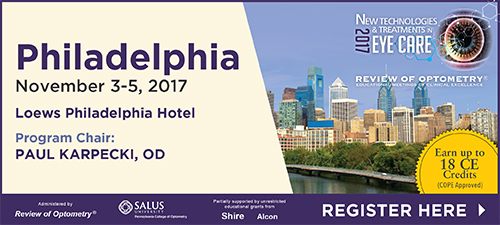
A
weekly e-journal by Art Epstein, OD, FAAO
Off the Cuff: A Big Day of Firsts
Today is a special day. For Optometric Physician it’s a day of many “firsts.” This is the first time that I’ve run a “best of” Off The Cuff—something I don’t expect to do again. This is the first time I’ve written about the same person on four separate occasions. It’s not the first time I’ve recognized a colleague for their contributions to the profession or their kindness as a person, but it is the first time I’ve written an editorial to wish someone a happy birthday. Uncle Frank Day (originally published March 14, 2016)
|
||||||
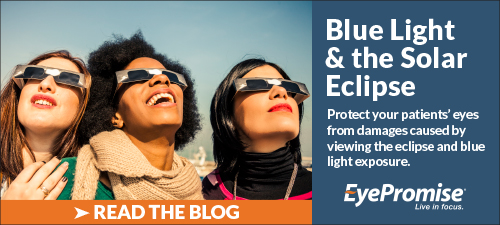 |
||
| Effects of Acute Peripheral/Central Visual Field Loss on Standing Balance | ||||
Vision impairments such as age-related macular degeneration (AMD) and glaucoma are among the top risk factors for geriatric falls and fall-related injuries. AMD and glaucoma lead to loss of the central and peripheral visual fields, respectively. This study utilized a custom contact lens model to occlude the peripheral or central visual fields in healthy adults, offering a novel within-subject approach to improve our understanding of the etiology of balance impairments that may lead to an increased fall risk in patients with visual field loss.
Two dynamic posturography tests, including an adapted version of the Sensory Organization Test and a virtual reality environment with the visual scene moving sinusoidally, were used to evaluate standing balance. Balance stability was quantified by displacement and time-normalized path length of the center of pressure. Nine young and eleven older healthy adults wore visual field occluding contact lenses during posturography assessments to compare the effects of acute central and peripheral visual field occlusion. Researchers found that visual field occlusion had greater impact on older adults than young adults, specifically when proprioceptive cues are unreliable. Furthermore, they added that the results suggested that both central and peripheral visions were important in postural control; however, peripheral vision might be more sensitive to movement in the environment. |
||||
SOURCE: O'Connell C, Mahboobin A, Drexler S, et al. Effects of acute peripheral/central visual field loss on standing balance. Exp Brain Res. 2017; Aug 1. [Epub ahead of print]. |
||||
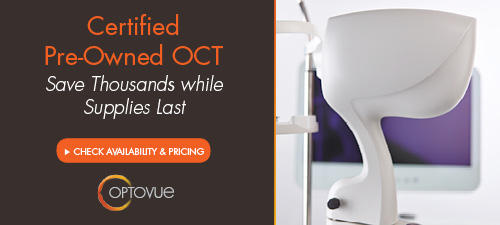
|
||
| Pilot Study of a Novel Classroom Designed to Prevent Myopia By Increasing Children's Exposure to Outdoor Light | ||||
This study sought to assess light characteristics and user acceptability of a prototype Bright Classroom (BC), designed to prevent children's myopia by exposing them to light conditions resembling the outdoors. Conditions were measured throughout the school year in the glass-constructed BC, a traditional classroom (TC) and outdoors. Teachers and children completed user questionnaires and children rated reading comfort at different light intensities. A total of 230 children (mean age 10.2 years, 57.4% boys) and 13 teachers (36.8 years, 15.4% men) completed questionnaires.
The median (Inter Quartile Range) light intensity in the BC (2,540 [1,330 to 4,060] lux) was greater than the TC (477 [245 to738] lux), though less than outdoors (19,500 [8,960 to 36,000] lux). A prominent spectral peak at 490nm to 560nm was present in the BC and outdoors, but less so in the TC. Teachers and children gave higher overall ratings to the BC than TC, and light intensity in the BC in summer and on sunny days (>5,000 lux) was at the upper limit of children's comfort for reading. Investigators concluded that light intensity in the BC exceeded TC and was at the practical upper limit for routine use. They added that children and teachers preferred the BC. |
||||
SOURCE: Zhou Z, Chen T, Wang M, et al. Pilot study of a novel classroom designed to prevent myopia by increasing children's exposure to outdoor light. PLoS One. 2017;12(7):e0181772. |
||||
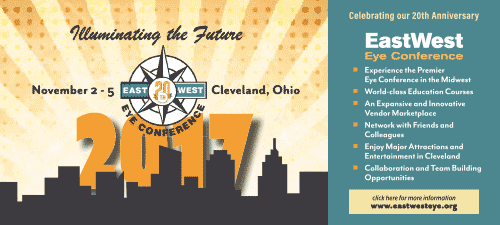 |
||
| Activated Retinal Pigment Epithelium, an Optical Coherence Tomography Biomarker for Progression in Age-related Macular Degeneration | ||||
The Project MACULA online resource for age-related macular degeneration (AMD) histopathology was surveyed systematically to form a catalog of 15 phenotypes of retinal pigment epithelium (RPE) and RPE-derived cells, as well as layer thicknesses in advanced disease. This was done to summarize and contextualize recent histology and RPE outcomes in advanced AMD as a way to show RPE activation and migration as important precursors to atrophy, manifesting as intraretinal hyperreflective foci on spectral-domain optical coherence tomography (SDOCT). Phenotypes were also sought in correlations with clinical longitudinal eye-tracked SD-OCT and with ex vivo imaging and histopathology correlations in geographic atrophy (GA) and pigment epithelium detachments (PED).
The morphology catalog suggested two main pathways of RPE outcomes: basolateral shedding of intracellular organelles (apparent apoptosis in situ) and activation with anterior migration. Investigators wrote that acquired vitelliform lesions might represent a third pathway. Migrated cells were packed with RPE organelles and confirmed as hyperreflective on SD-OCT. RPE layer thickening due to cellular dysmorphia and thick basal laminar deposit was observed near the border of GA. Drusenoid PED showed a life cycle of slow growth and rapid collapse preceded by RPE layer disruption and anterior migration. Researchers wrote that RPE activation and migration were an important precursor to atrophy that could be observed at the cellular level in vivo via validated SD-OCT. Collapse of large drusen and drusenoid PED appeared to occur when RPE death and migration prevented continued production of druse components. Data implicated excessive diffusion distance from choriocapillaris in RPE death as well as a potential benefit for targeting drusen in GA. |
||||
SOURCE: Curcio CA, Zanzottera EC, Ach T, et al. Activated retinal pigment epithelium, an optical coherence tomography biomarker for progression in age-related macular degeneration. Invest Ophthalmol Vis Sci. 2017;58(6):BIO211-26. |
||||
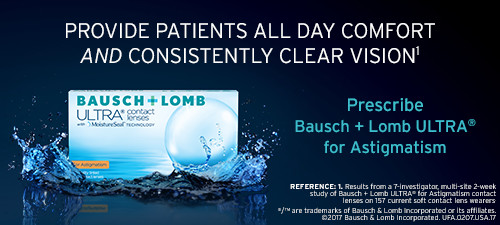 |
||
| News & Notes | |||||||||
| Bausch + Lomb Receives 510(K) Clearance for Boston XO & XO2 Materials Bausch + Lomb received 510(k) FDA clearance for the therapeutic use of its Boston XO and Boston XO2 materials in treating several ocular surface diseases. The gas permeable materials are used in a broad spectrum of custom specialty lenses including the Zenlens scleral lens from Alden Optical, a part of the Bausch + Lomb Specialty Vision Products business. They also are indicated for daily wear to correct refractive ametropia and manage irregular corneal conditions. The expanded indication enables scleral lenses manufactured with the gas permeable materials to be used for treatment of certain ocular surface conditions, including dry eye disease and limbal stem cell deficiencies, skin disorders with ocular surface manifestations, neurotrophic keratitis, and corneal exposure that may benefit from an expanded tear reservoir and the saline-hydrated environment inherent in a scleral lens design. Read more.
|
|||||||||
visuSolution Announces Commercial Expansion to U.S.
|
|||||||||
| Daily Contact Lenses Surpass Monthlies in U.S. Sales Point-of-sale data from GfK Optics, a provider of market and consumer information, shows strong momentum for daily contact lenses, driving overall growth in the U.S. soft contact lens market. But the number of new contact lens wearers remains flat overall. In January 2017, for the first time, monthly sales of daily contact lenses surpassed those of monthly lenses in dollar volume, reaching 38.1% market share—up from 31.5% in January 2016, according to the report. New products and innovation continue to drive daily lens sales surges; in 2016, 42% of growth in the daily category was from product launches in the prior year. GfK data also showed that the average price of a single daily lens has increased by more than 10 cents since 2012, driven in part by the growing prevalence of higher-cost multifocal, toric and silicon hydrogel lenses within the modality. Daily multifocal lenses grew 45.4% in 2016 over the prior year, with more than three quarters (77.9%) of growth driven by products launched in 2015. Read more.
|
|||||||||
| AAOPT & AAO Team The American Academy of Optometry and American Academy of Ophthalmology are teaming up to offer tips on how to safely photograph an eclipse. On Aug. 21, the first total eclipse of the sun will happen in the United States since 1979. Today, however, millions of individuals have access to smartphones and digital cameras to photograph the eclipse, so eye care professionals caution first-time viewers who may be unaware of the damage they could potentially do to their eyes. The most important safety tip the release mentions is to never look directly at the sun. Viewing the sun directly, even for brief periods, can cause permanent damage to the retina and result in blindness. Specially designed solar eclipse glasses are essential, and cameras need to be equipped with specially designed solar filters, the release said. Read more. |
|||||||||
|
Optometric Physician™ (OP) newsletter is owned and published by Dr. Arthur Epstein. It is distributed by the Review Group, a Division of Jobson Medical Information LLC (JMI), 11 Campus Boulevard, Newtown Square, PA 19073. HOW TO ADVERTISE |





